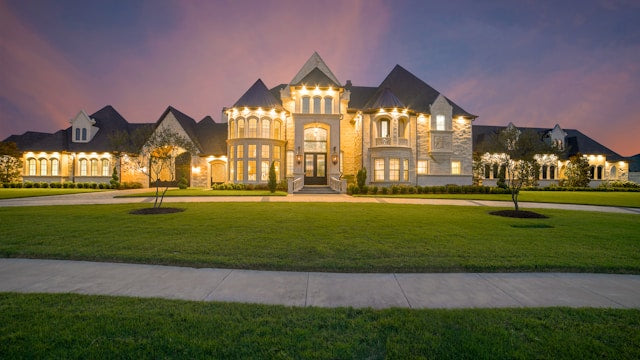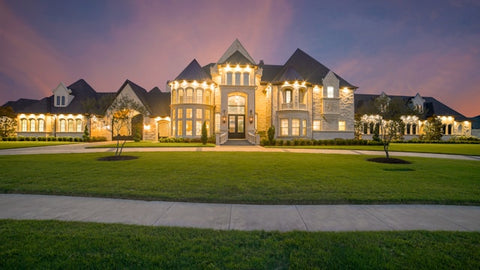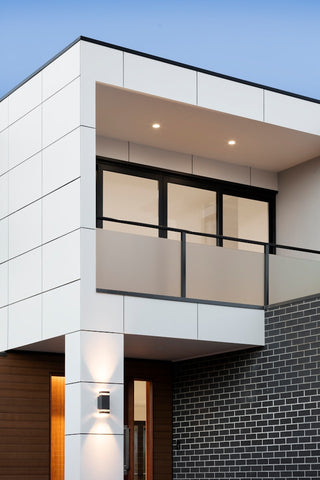
Energy-Efficient Outdoor Lighting Techniques and Ideas
In today's eco-conscious world, implementing energy-efficient outdoor lighting is more crucial than ever before. Not only does it reduce the carbon footprint and conserve energy, but it also significantly saves electricity bills.
In this article, we'll explore techniques and ideas that homeowners and businesses can adopt to illuminate their outdoor spaces in an environmentally friendly, aesthetically pleasing, and cost-effective manner. From solar-powered lights to LED options and smart lighting systems, we will guide you through the best practices for enhancing your outdoor areas while prioritizing sustainability.

Solar-Powered Lights
Solar-powered lights are an excellent option for installing outdoor lighting sustainably and cheaply. These lights use solar cells, also known as photovoltaic (PV) panels, to convert sunlight into electricity stored in rechargeable batteries. As the sun sets, the built-in sensors activate the lights, providing illumination throughout the night.
One of the main benefits of solar-powered lights is their ease of installation. Since they do not require wiring, they can be placed virtually anywhere in your outdoor space, making them a versatile lighting option.
They are also cost-effective as they do not rely on electricity from the grid and have minimal maintenance requirements. Solar-powered lights come in various designs, from traditional lanterns to modern stake lights, allowing you to add a personalized touch to your outdoor area.
LED Lights
LED (light-emitting diode) lights are another energy-efficient lighting option for outdoor spaces. Compared to traditional incandescent bulbs, LEDs consume significantly less energy, have a longer lifespan, and emit less heat. This makes them a more eco-friendly and cost-effective option.
LED lights also offer versatile design options, from string lights to spotlights, allowing you to create the desired ambiance for your outdoor area. They are also available in various colors, perfect for creating festive displays or highlighting specific outdoor space features.
Moreover, LED lights can be dimmed easily, adding an extra layer of customization and energy savings. With a longer lifespan, you also save on replacement costs, making LEDs a sustainable choice in the long run.

Smart Lighting Systems
Smart lighting systems have gained popularity recently due to their convenience, efficiency, and sustainability. These systems use sensors, timers, and remote controls for optimal control over outdoor lighting. Some even come with motion sensors that activate lights only when needed, reducing energy consumption.
Additionally, smart lighting systems allow for easy customization and scheduling of outdoor lighting, giving homeowners and businesses the ability to adjust lighting levels according to their needs. Some systems even have geofencing capabilities, automatically turning off outdoor lights when no one is present or at a certain time.
Additional Factors to Consider
- Energy Source and Consumption: Evaluate the efficiency of the energy source for your outdoor lighting, considering solar versus grid power. Efficient lighting choices like solar-powered or LED lights can significantly reduce energy consumption and lower electricity bills.
- Durability and Weather Resistance: Outdoor lighting must withstand various weather conditions, including rain, snow, and extreme temperatures. Select durable materials and designs to ensure long-term performance and minimize maintenance costs.
- Light Placement and Purpose: Careful consideration of light placement can enhance security, aesthetics, and functionality. Strategically placed lights can illuminate pathways, accentuate landscaping, or deter potential intruders, maximizing both the beauty and safety of outdoor spaces.
- Brightness and Color Temperature: The brightness (measured in lumens) and color temperature of your outdoor lighting should suit the intended mood and utility. Soft, warm lights create a cozy atmosphere, while brighter, cooler lights are ideal for task-oriented or security lighting.
- Integration with Existing Systems: Incorporate outdoor lighting into your home automation systems for enhanced convenience and efficiency. Compatibility with smart home devices allows for remote control, scheduling, automation, and streamlining outdoor lighting management.
- Environmental Impact: Consider the ecological footprint of your outdoor lighting choices. Opt for energy-efficient and sustainable options that contribute to reducing carbon emissions and environmental harm.

Safety Considerations
- Avoid Overlighting: Excessive lighting can lead to light pollution, negatively impacting wildlife and disrupting ecosystems. Ensure the lighting is appropriate for the setting and does not contribute to unnecessary glare or skyglow.
- Secure Installation: Ensure all outdoor lighting fixtures are securely installed to prevent them from becoming hazards in windy or adverse weather conditions. This is especially important for tall lighting fixtures that could pose a risk if they fall. Contact professionals in your area for more information on the safety and installation process.
- Electrical Safety: If not using solar-powered lights, ensure that all wiring complies with local electrical codes and is protected against water and physical damage. Use ground-fault circuit interrupter (GFCI) outlets for added safety.
- Pathway and Step Lighting: Properly illuminate pathways, steps, and elevation changes to prevent tripping and falls. This not only enhances the safety of the outdoor area but also adds to its aesthetic appeal.
- Choose the Right Materials: Opt for lighting fixtures made from durable, weather-resistant materials capable of withstanding the local climate. This reduces the risk of damage and ensures the longevity of your outdoor lighting.
- Timers and Motion Sensors: Utilize timers and motion sensors to control when lights are on, which can prevent accidents in dark areas and deter potential intruders, all while conserving energy.
- Regular Maintenance: Inspect outdoor lighting fixtures for damage, wear, or exposed wires. Regular maintenance helps to identify and rectify potential hazards before they become a serious safety issue.
Conclusion
Outdoor lighting serves multiple purposes, from adding aesthetic charm to practical functionality and safety.
With the variety of energy-efficient and sustainable options available, selecting the right outdoor lighting for your space requires careful consideration of factors such as energy source, durability, placement, brightness, integration with existing systems, environmental impact, and safety considerations.
By making informed choices and taking proper precautions, you can create a well-lit and environmentally friendly outdoor space that meets your specific needs and enhances the overall value of your property.
Leave a comment
Comments will be approved before showing up.



